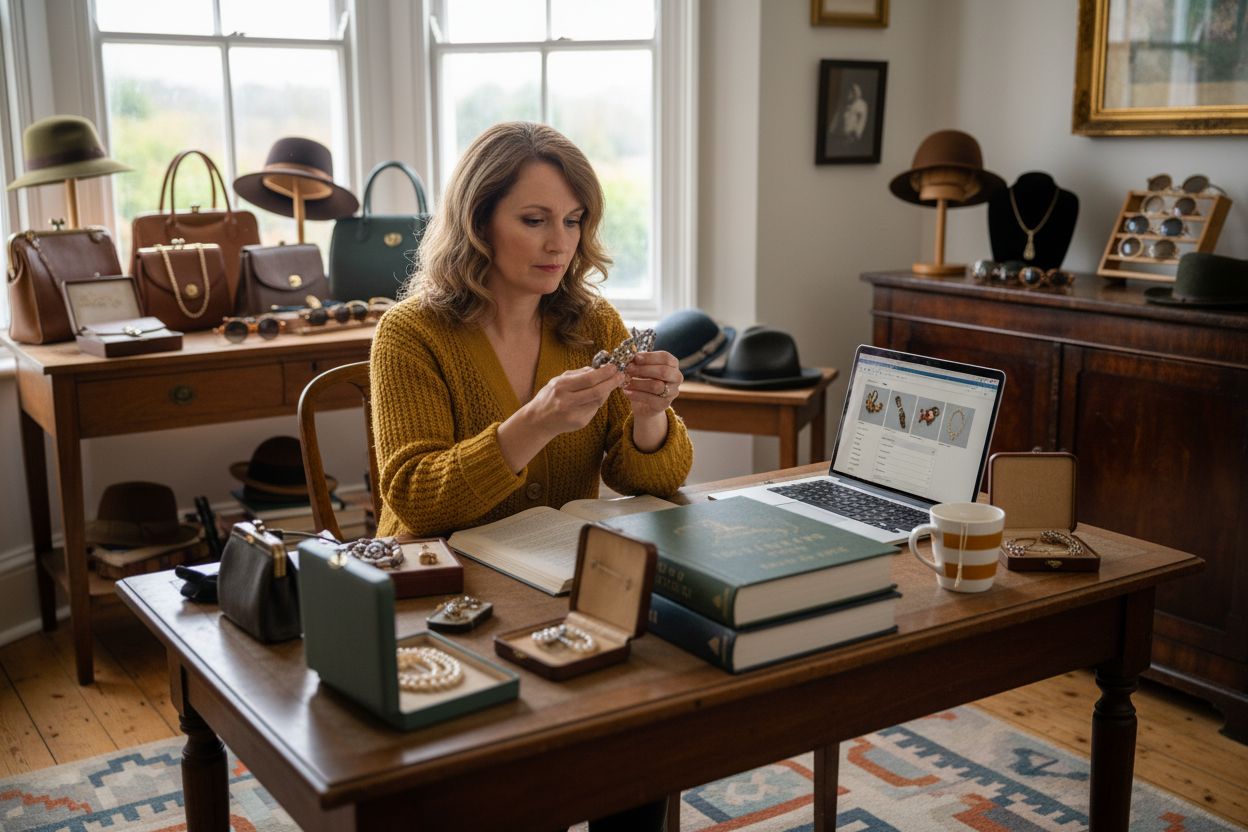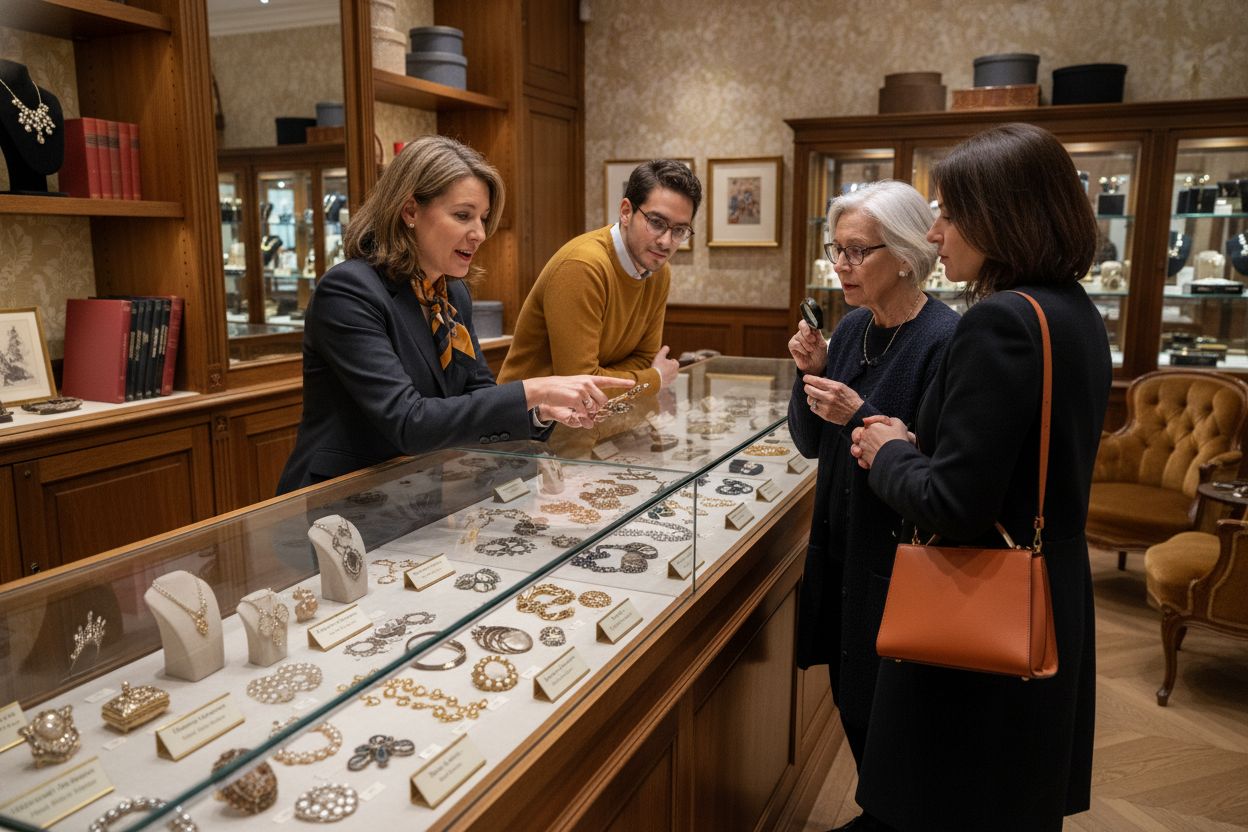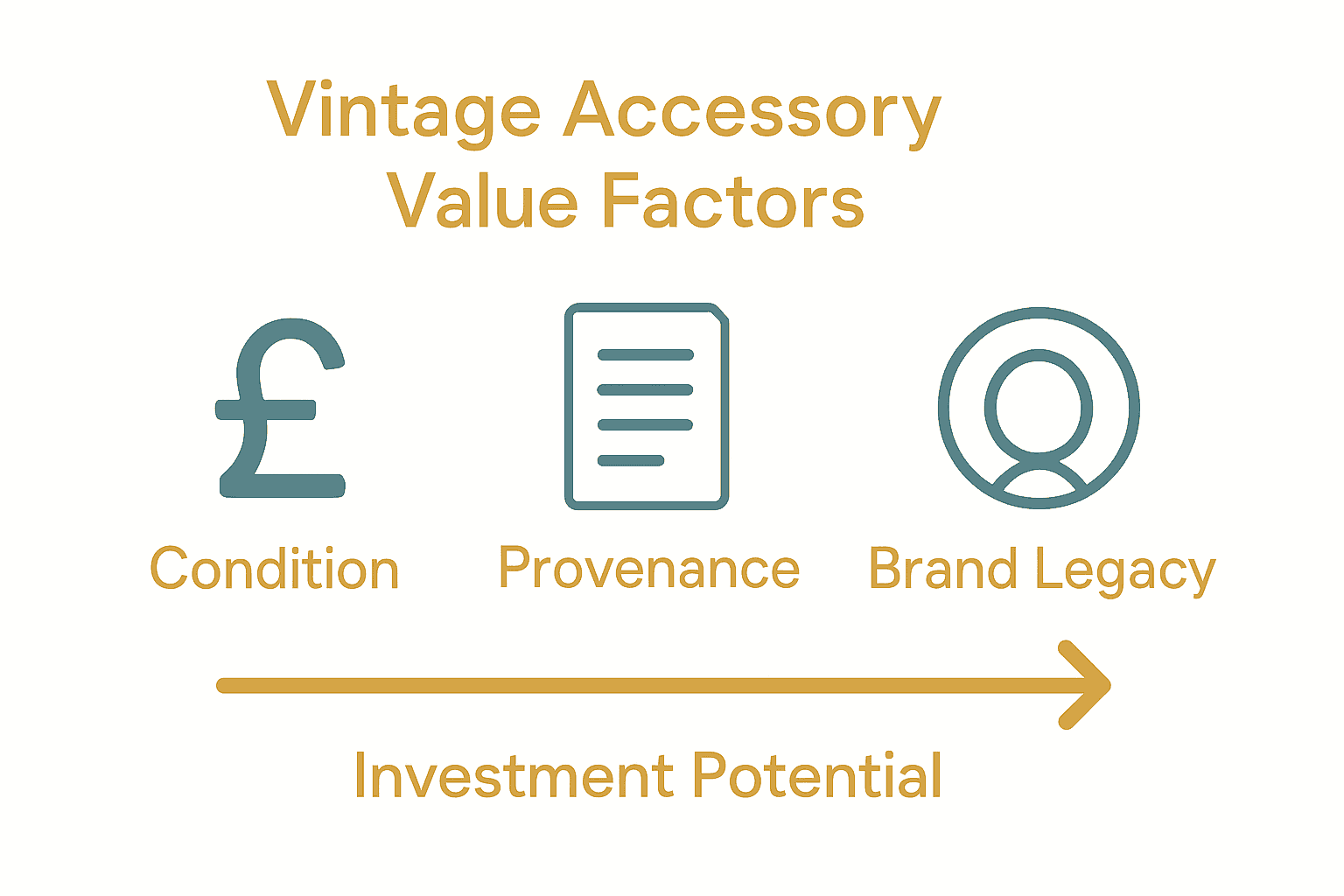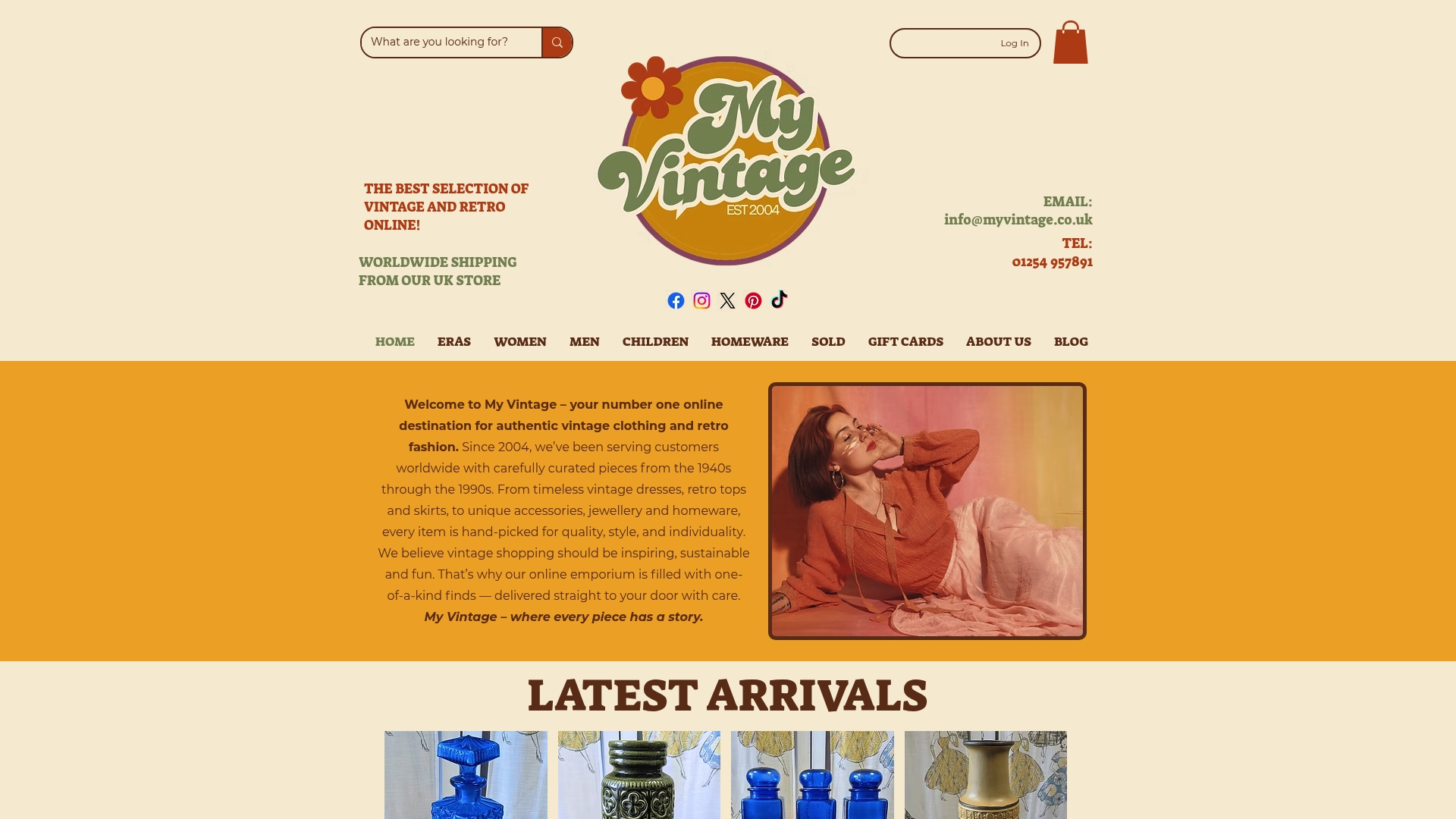Complete Guide to Collecting Vintage Accessories
- Emma

- 2 days ago
- 8 min read

Did you know that only about one in five second-hand items truly qualify as vintage according to UK market standards? Authentic vintage accessories offer more than a glimpse into the past, serving as rare keepsakes that reveal stories of style, culture, and innovation. For anyone curious about what makes these treasures special, learning to recognize the unique features and value behind each piece can transform collecting into a deeply rewarding pursuit.
Key Takeaways
Point | Details |
Authenticity is Crucial | Authentic vintage accessories are determined by original markings, quality materials, and historical context, necessitating a trained eye for collectors. |
Cultural Significance | Each vintage piece offers insights into design history and serves as a testament to cultural narratives, making collecting an exploration of heritage. |
Sustainability Impact | Choosing vintage is an act of environmental activism, promoting sustainability by extending the lifecycle of fashion items and reducing waste. |
Investment Potential | Vintage accessories can be lucrative investments, with value contingent on factors like condition, provenance, and brand legacy, requiring informed decision-making. |
Table of Contents
Defining Vintage Accessories and Collecting
Vintage accessories are more than just old items - they are historical artefacts that tell compelling stories about design, culture, and craftsmanship. Collecting vintage accessories involves a nuanced approach that goes far beyond simply acquiring aged objects. According to research from UK vintage markets, authentic vintage pieces require careful assessment across multiple dimensions.
Authenticity is paramount in vintage collecting. Explore our guide on understanding vintage accessories reveals that true vintage items are distinguished by several critical characteristics:
Original copyright markings
Period-correct manufacturing details
Distinctive packaging characteristics
Superior material quality
Unique provenance and historical context
In the UK resale market, rigorous standards mean that only approximately one in five second-hand items meet the stringent criteria for being considered genuinely “vintage-worthy”. This selective process demands keen observation skills and deep understanding of historical design elements. Collectors must develop an expert eye to differentiate authentic vintage pieces from modern reproductions, examining intricate details like stitching techniques, label designs, and manufacturing origins.
Beyond technical assessment, collecting vintage accessories is ultimately about preserving cultural heritage. Each piece represents a snapshot of design history, embodying the aesthetic sensibilities, technological capabilities, and social dynamics of its original era. Whether you’re drawn to mid-century jewellery, 1970s handbags, or rare retro sunglasses, vintage collecting transforms shopping into a passionate exploration of style and storytelling.
Popular Types and Style Eras Explained
Vintage accessories represent a fascinating journey through design history, with each era bringing its distinctive aesthetic and cultural signature. Dive into our fashion era exploration to understand how accessories evolved from intricate handcrafted pieces to bold modern statements.
According to research from UK vintage markets, collectors can trace remarkable transformations across multiple iconic periods:
Georgian Era (1714-1837): Characterised by delicate, hand-crafted accessories with extraordinary attention to detail
Victorian Era (1837-1901): Featuring sentimental jewellery motifs and romantic design elements
Art Nouveau (1890-1910): Introducing organic shapes and elegant enamel work
Art Deco (1920s-1930s): Presenting bold geometric designs and avant-garde styling
Retro Period (1940s-1950s): Marked by chunky gold accessories and statement gemstones
The UK vintage scene particularly highlights fascinating decade-specific trends. The 1960s and 70s celebrated mod accessories and vibrant knitwear, while the 1980s showcased tailored designer looks. The 1990s embraced minimalism and Britpop-influenced styles, creating a unique cultural aesthetic that continues to inspire contemporary fashion enthusiasts.
Here’s a summary of defining features for popular vintage accessory eras:
Era/Period | Key Features | Typical Accessories |
Georgian (1714-1837) | Hand-crafted Intricate detail | Cameos Lockets Hair pins |
Victorian (1837-1901) | Sentimental motifs Romantic design | Mourning jewellery Brooches Pocket watches |
Art Nouveau (1890-1910) | Organic shapes Enamel work | Sash pins Stick pins Pendant necklaces |
Art Deco (1920s-30s) | Geometric patterns Avant-garde styling | Cocktail rings Clutch bags Hat pins |
Retro (1940s-50s) | Chunky gold Statement gemstones | Bib necklaces Bold earrings Compacts |
1960s-70s | Mod style Vibrant materials | Oversized sunglasses Plastic bangles |
1980s | Tailored Designer focus | Power brooches Logo belts |
1990s | Minimalism Britpop inspiration | Chokers Mini backpacks |
Y2K (2000s) | Logo mania Pop culture icons | It-bags Statement belts |
Modern collectors are increasingly drawn to specific period pieces, with Generation Z showing particular interest in Y2K accessories like low-rise logo bags and iconic ‘it-bags’ that represent a specific moment in fashion history. Each accessory tells a story, transforming collecting from mere acquisition into a passionate exploration of design, culture, and personal expression.

Cultural, Historical, and Emotional Value
Vintage accessories transcend mere material possessions, serving as powerful conduits of cultural memory and personal narrative. Learn more about fashion’s emotional landscape and discover how each piece carries a profound story beyond its physical form.
According to insights from Vogue’s research on vintage collectors, remarkable collections like those of Jefferson Ihenacho demonstrate that vintage accessories are far more than fashion items. They are meticulously catalogued artefacts representing significant design movements, particularly from iconic British designers such as Alexander McQueen and Vivienne Westwood. These pieces embody cultural heritage, capturing specific moments in creative expression.
The emotional resonance of vintage accessories is particularly striking. Early 2000s Dior or late-90s Gucci pieces are prized not just for their aesthetic beauty, but for their ability to connect collectors with influential creative eras. Each accessory becomes a tangible link to a specific cultural moment, preserving memories, design innovations, and personal histories.
Collecting vintage accessories is ultimately an intimate dialogue between past and present. These items are more than passive objects - they are active storytellers. They capture the spirit of their era, reflect social dynamics, and allow modern enthusiasts to physically interact with design history. Whether it’s a carefully preserved handbag from the swinging 60s or a minimalist 90s brooch, each piece offers a unique window into the aesthetic sensibilities and cultural narratives of its time.
Sustainability and Environmental Benefits
Vintage accessories represent far more than nostalgic fashion choices - they are powerful tools for environmental sustainability. Explore our comprehensive guide to sustainable fashion and understand how each vintage piece contributes to reducing fashion’s ecological footprint.
According to research from UK vintage retailers like Vintage Recovery, sustainable practices are integral to the vintage accessories ecosystem. These retailers demonstrate environmental responsibility through strategic approaches:
Partnering with local suppliers to minimise carbon emissions
Upcycling unsold or damaged items
Utilising eco-friendly packaging materials
Collaborating with low-impact delivery services
British designers are pioneering sustainable accessory practices, with individuals like Lucy Tammam showcasing how vintage and sustainable principles can intersect. Her innovative projects, such as the “One Dress: PLANET” initiative, highlight how artisanal techniques and recycled materials can create stunning accessories while maintaining environmental consciousness.
Choosing vintage accessories is a direct form of environmental activism. By extending the lifecycle of existing fashion items, collectors prevent unnecessary waste, reduce demand for new production, and challenge the disposable nature of contemporary fashion. Each vintage piece represents a small victory against fast fashion’s environmental impact - a tangible way to dress stylishly while supporting planetary wellbeing.
Investment Potential and Rarity FactorsVintage accessories are not merely aesthetic treasures but sophisticated investment opportunities that reward knowledgeable collectors. Dive deeper into vintage market dynamics to understand how rarity and provenance transform these items into valuable assets.According to research from UK vintage markets, the investment potential of vintage accessories varies dramatically based on several critical factors:
Condition: Pristine, boxed items command significantly higher prices
Regional Editions: Limited regional releases increase collectible value
Provenance: Strong documented history enhances monetary worth
Brand Legacy: Iconic designer pieces appreciate more consistently
Campaigns like Vestiaire Collective’s “Vintage Pieces at Vintage Prices” demonstrate remarkable investment potential. For instance, a 1983 Chanel Timeless bag can be resold for a fraction of current retail prices, driven by nostalgia, craftsmanship, and inherent rarity. In the UK market, vintage collectibles typically stratify into distinct value tiers: mid-tier pieces fetch £100–£400, while exceptionally rare, mint-condition items can exceed £1,000.
Successful vintage accessory investment requires deep understanding of market dynamics, historical significance, and meticulous preservation. Collectors who develop expertise in identifying unique pieces, understanding design provenance, and maintaining item condition can transform their passion into a potentially lucrative long-term investment strategy. Each carefully selected vintage accessory becomes not just a stylish statement, but a potential financial asset with appreciating cultural and monetary value.

Common Pitfalls and Expert Collector Tips
Vintage accessory collecting is an art form that demands keen insight and strategic knowledge. Discover expert strategies for vintage collecting to navigate the complex landscape of historical fashion acquisitions.
According to research from UK vintage markets, collectors must be vigilant about several critical potential pitfalls:
Misidentifying reproductions as authentic pieces
Overestimating an item’s condition
Undervaluing crucial provenance documentation
Failing to verify original manufacturing details
Overlooking subtle authenticity markers
Seasoned collectors like Jefferson Ihenacho recommend comprehensive research strategies. Expert advice emphasizes the importance of:
Inspecting original labels meticulously
Examining precise stitching techniques
Evaluating material quality and authenticity
Sourcing from reputable vintage fairs and specialist markets
Developing deep knowledge about overlooked designers
Successful vintage collecting requires more than casual interest - it demands patience, expertise, and a methodical approach. By understanding market nuances, recognising subtle design variations, and cultivating relationships with trusted vintage dealers, collectors can transform potential pitfalls into opportunities for discovering truly remarkable pieces. The most successful collectors treat each acquisition as a journey of historical discovery, valuing craftsmanship, rarity, and the unique story behind every vintage accessory.
Bring Vintage History Home with My Vintage
Have you felt overwhelmed by the search for authentic vintage accessories, worried about misidentifying reproductions, or missing out on unique pieces with true historical value? The journey to building a meaningful vintage collection can be confusing, especially when authenticity, rarity, and sustainability all matter to you. Our article highlighted the importance of selecting genuine vintage treasures, understanding provenance, and making sustainable style choices. Now, bring these principles to life with a trusted partner.

Discover a handpicked selection crafted to help you confidently build your collection. Shop authentic vintage accessories and retro homeware at My Vintage where every item is chosen for quality, heritage, and individuality. For further inspiration and educational guides, visit our trend insights and articles and see how sustainability meets timeless fashion. Start your search now and let your next accessory tell a story worth sharing.
Frequently Asked Questions
What defines a vintage accessory?
Vintage accessories are historical artefacts that represent a specific era in design, culture, and craftsmanship. They are typically distinguished by characteristics such as original copyright markings, period-correct manufacturing details, and unique provenance.
How can I ensure the authenticity of a vintage accessory?
To ensure the authenticity of a vintage accessory, examine critical factors like original labels, stitching techniques, material quality, and manufacturing origins. Comprehensive research on the item’s history can also help verify its authenticity.
What emotional value do vintage accessories hold for collectors?
Vintage accessories carry profound emotional resonance for collectors, often connecting them to influential design movements and specific cultural moments. Each piece serves as a tangible link to the past, preserving memories and personal histories.
Are vintage accessories a good investment?
Yes, vintage accessories can be a worthwhile investment due to factors like condition, rarity, provenance, and brand legacy. Well-maintained, authentic pieces can appreciate in value over time, making them not only stylish but also financially rewarding.
Recommended






